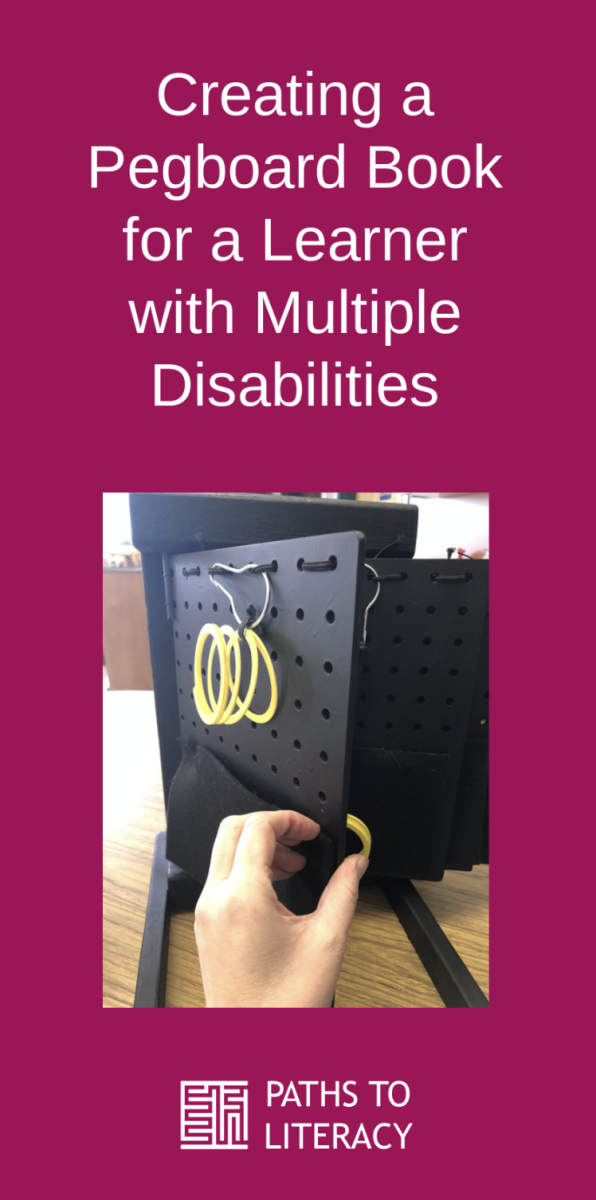Creating a Pegboard Book for a Learner with Multiple Disabilities
I created this pegboard book for a second grader with CVI that I worked with in Southern Oregon. He was in a wheelchair, had limited hand/arm strength, and showed difficulty with visually attending to objects, tracking, shift-of-gaze, and using a visually-directed reach. A CVI range was conducted, and he scored a 1-2 on that scale. He was also one of the happiest, silliest kids I’ve had the pleasure of working with! I had a goal to keep him engaged during circle reading time, where his class would break into small groups to read books that were often not accessible to him.
Inspired by One Yellow Slinky
I went to a vision conference in 2018, where I was introduced to the “One Yellow Slinky” book by Diane Sheline. It was a great make-and-take activity, and I had a feeling my student would be very excited by it upon my return! I was right: he really enjoyed the auditory “slaps” of the slinky against the pages, but I began to notice he had a hard time using his lower visual field to attend to books on the table. He was much more visually attentive when I held the book up in front of him, but we all know this isn’t a great long-term strategy in a busy classroom.
So, I sought out solutions. At first, I tried attaching the “One Yellow Slinky” book to a slant board, which helped some, but I wanted the student to be able to really interact with the pages, including turning them to show he was “finished” with that page and ready to move on. I found instructions for this incredible pegboard book on Strategy To See!
What Is a Pegboard Book?
Pegboard books provide a way for young children who are blind or visually impaired, including those with multiple disabilities, to begin to explore books. Based on the work of Dr. Lilli Nielsen and her Active Learning approach, this format uses real objects attached to pieces of pegboard. Read more about Pegboard Books.
Building the Pegboard Book Frame
I’m not great with a table saw, so I sought out help to get this built. Jeff Bowler, TVI at Washington State School for the blind, was kind enough to take these plans and turn them into a beautiful reality for me and my student! Thank you, Jeff!
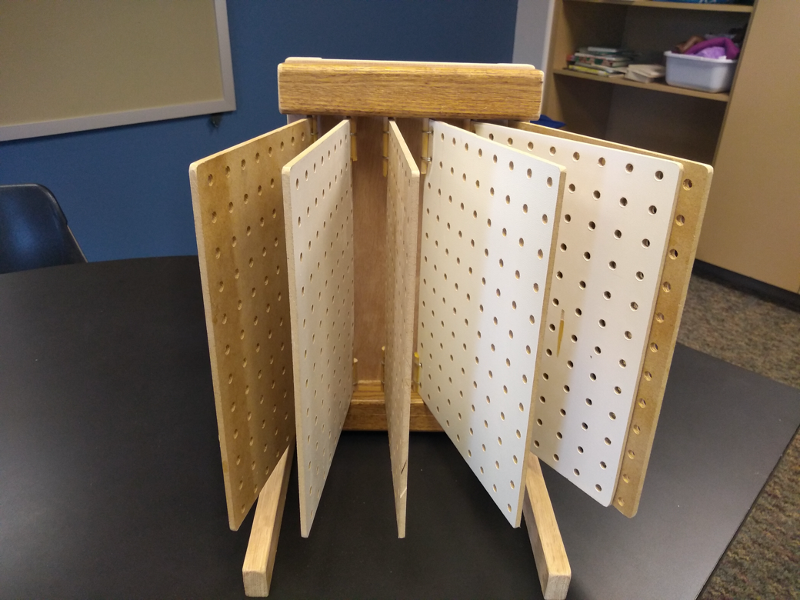
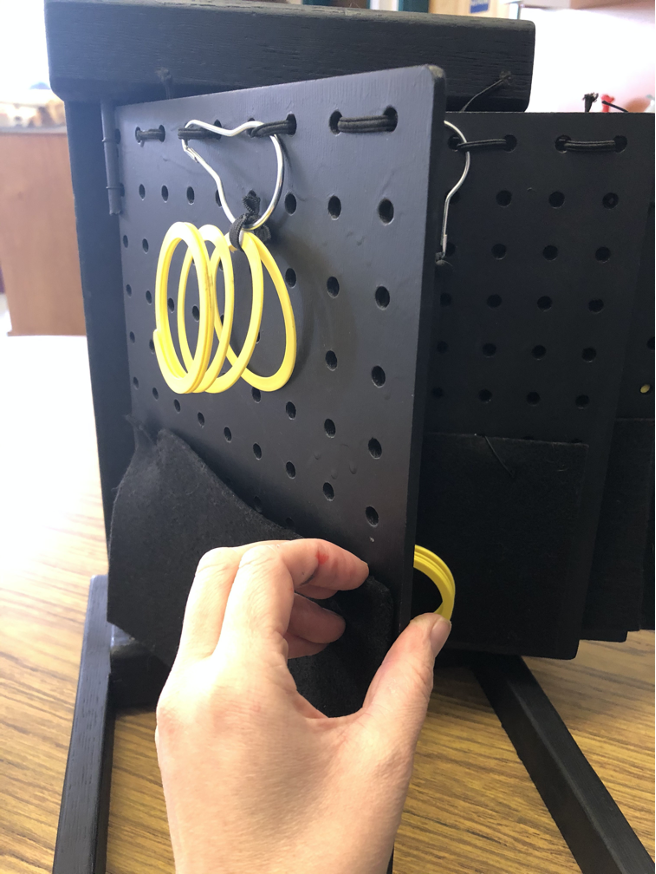
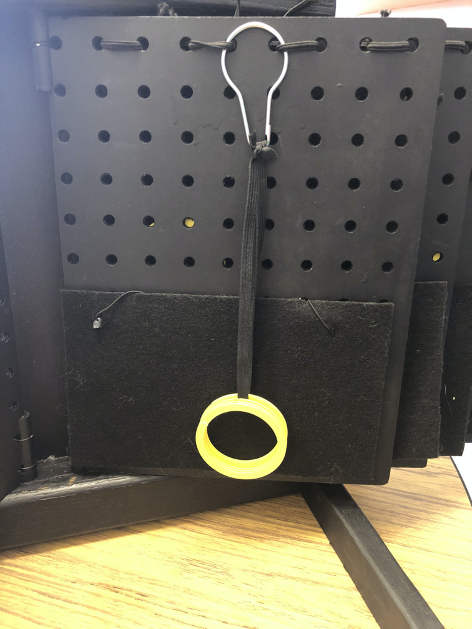
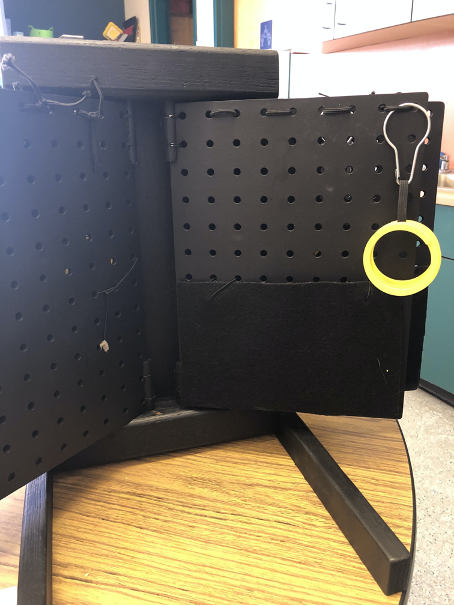
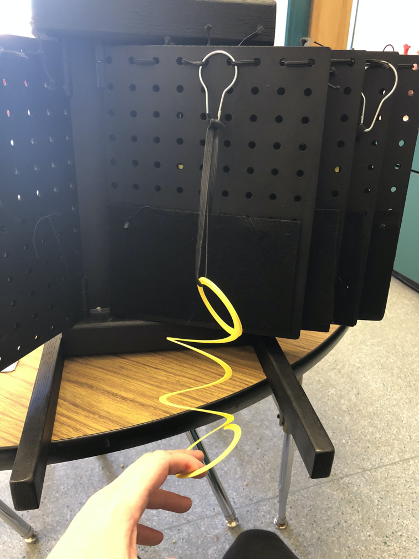

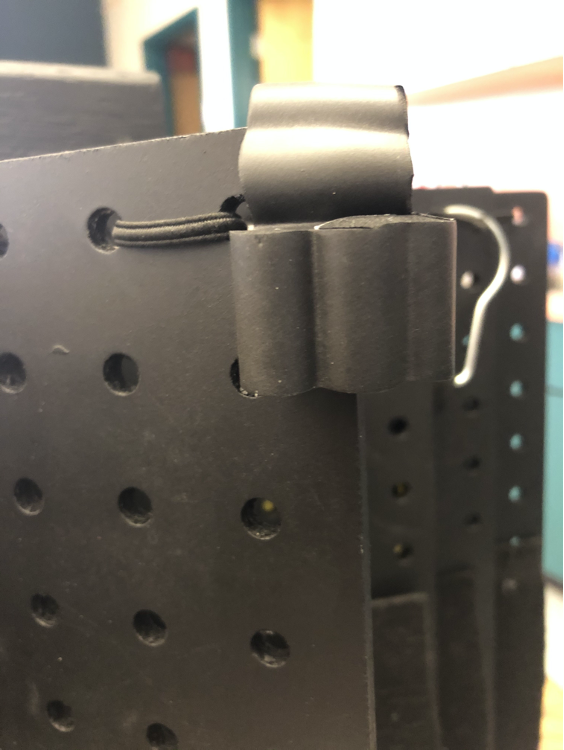
This book wound up working quite well for my student. He recognized the story, and slowly, but surely, began to directly engage in reading time! With this design, he was able to practice:
- Visually locating an object presented on different areas of the page
- Visually directed reach (to grab and pull those slinkies!)
- Visually tracking those slinkies as he moved them about the page
- Increased visual attention time to one task
- Building a consistent reading routine into his school day
- Building anticipation for the next “page” of the story
- Reaching to grab and “turn” the book pages when he was ready to move on to the next page!
Different types of stories could be adapted for him using the same familiar pegboard book with a variety of new attachments and text cards. Looking back, I would have changed one aspect, which is the shiny metal shower curtain hooks. These could have been either purchased or painted matte black, to additionally reduce the visual clutter/distraction. Also, black felt could be affixed to the back of each page to reduce light coming through the holes of the pegboard.
Overall, I feel this was an incredibly successful literacy tool for my student! I learned that literacy can and should be adapted for all of our students, including those who may have been traditionally labeled “non-readers,” and that this process itself can help to teach and build visual skills for students with CVI.
